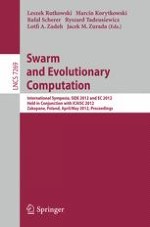2012 | Buch
Swarm and Evolutionary Computation
International Symposia, SIDE 2012 and EC 2012, Held in Conjunction with ICAISC 2012, Zakopane, Poland, April 29-May 3, 2012. Proceedings
herausgegeben von: Leszek Rutkowski, Marcin Korytkowski, Rafał Scherer, Ryszard Tadeusiewicz, Lotfi A. Zadeh, Jacek M. Zurada
Verlag: Springer Berlin Heidelberg
Buchreihe : Lecture Notes in Computer Science
